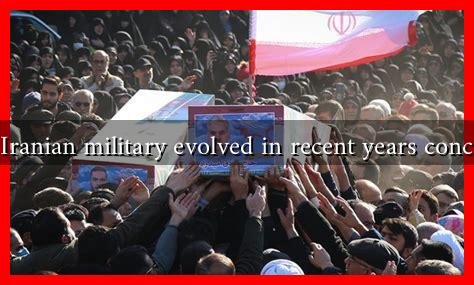-
Table of Contents
- How Has the Iranian Military Evolved in Recent Years Concerning Israel?
- Historical Context: Iran-Israel Relations
- Military Modernization and Strategic Objectives
- Regional Alliances and Proxy Warfare
- Technological Advancements and Cyber Warfare
- International Responses and Implications
- Conclusion: A Complex and Evolving Landscape
How Has the Iranian Military Evolved in Recent Years Concerning Israel?
The Iranian military has undergone significant transformations in recent years, particularly in its posture and capabilities concerning Israel. This evolution is shaped by a complex interplay of regional dynamics, technological advancements, and strategic imperatives. Understanding these changes is crucial for grasping the broader geopolitical landscape of the Middle East.
Historical Context: Iran-Israel Relations
To appreciate the current state of affairs, it is essential to consider the historical context of Iran-Israel relations. Following the 1979 Iranian Revolution, the two nations transitioned from allies to adversaries. Iran’s leadership adopted a staunchly anti-Israel stance, viewing Israel as a primary threat to its regional ambitions and ideological goals.
Military Modernization and Strategic Objectives
In recent years, Iran has focused on modernizing its military capabilities, particularly in response to perceived threats from Israel.
. This modernization can be categorized into several key areas:
- Missile Development: Iran has significantly advanced its ballistic missile program, developing a range of missiles capable of striking targets throughout the region, including Israel. The Shahab-3 missile, with a range of over 1,000 kilometers, exemplifies this capability.
- Drone Technology: Iran has invested heavily in unmanned aerial vehicles (UAVs), which have been used for reconnaissance and strike missions. The Shahed series of drones has been particularly notable for its deployment in regional conflicts.
- Asymmetric Warfare: Iran has increasingly relied on asymmetric warfare strategies, utilizing proxy groups such as Hezbollah in Lebanon and various militias in Syria and Iraq to extend its influence and threaten Israel indirectly.
Regional Alliances and Proxy Warfare
Iran’s military evolution is also characterized by its strategic alliances and the use of proxy forces. The Islamic Revolutionary Guard Corps (IRGC) has played a pivotal role in establishing and supporting these groups, which serve as force multipliers against Israel.
- Hezbollah: The Lebanese militant group has received substantial military support from Iran, including advanced weaponry and training. Hezbollah’s capabilities pose a direct threat to northern Israel, with estimates suggesting it possesses over 150,000 rockets and missiles.
- Syrian Militias: Iran has also cultivated relationships with various militias in Syria, enabling it to establish a foothold near Israel’s borders. These groups have been involved in direct confrontations with Israeli forces.
Technological Advancements and Cyber Warfare
In addition to conventional military capabilities, Iran has made strides in cyber warfare, targeting Israeli infrastructure and institutions. The Iranian Cyber Army has been implicated in various cyberattacks aimed at disrupting Israeli systems, showcasing a new front in the conflict.
For instance, the 2020 cyberattack on Israel’s water infrastructure highlighted Iran’s growing cyber capabilities and its willingness to engage in non-traditional warfare. Such actions not only aim to inflict damage but also serve as psychological operations to instill fear and uncertainty.
International Responses and Implications
The evolution of the Iranian military concerning Israel has prompted various international responses. The United States and its allies have increased military cooperation with Israel, focusing on missile defense systems like the Iron Dome and the Arrow program. Additionally, the normalization of relations between Israel and several Arab states through the Abraham Accords has altered the regional dynamics, potentially isolating Iran further.
Conclusion: A Complex and Evolving Landscape
The Iranian military’s evolution in recent years concerning Israel reflects a multifaceted strategy aimed at countering perceived threats and asserting regional influence. Through advancements in missile technology, drone capabilities, and cyber warfare, Iran has positioned itself as a formidable adversary. The reliance on proxy forces further complicates the security landscape, making direct confrontations less predictable.
As the geopolitical situation continues to evolve, the implications of Iran’s military developments will remain a critical area of focus for policymakers and analysts alike. Understanding these dynamics is essential for anticipating future conflicts and fostering stability in the region.
For further reading on the topic, you can explore resources such as Brookings Institution.





